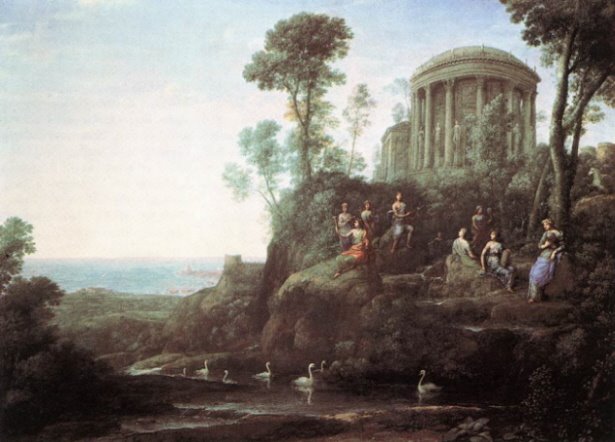+Rene+Magritte,+Paysage+de+Baucis,+grav+94-100,+37,5x27,5,+previously+William+Weston+Gall.jpg)
(1966) Rene Magritte, Paysage de Baucis, Gravura 94/100, 37,5 x 27,5 cm, anteriormente em William Weston Gallery.
"We are so used to recognizing people from their faces that we feel disoriented when they are absent, or delusive, or otherwise insufficient.
How specific such facial indicators must be has been put to the test by Magritte's etching, Paysage de Baucis, which is considered to be a form of self-portrait because of its resemblance to portrait photographs of the artist and because it includes the bowler hat that Magritte always wore. Without this prior knowledge, however, a viewer would have difficulty recognizing the image as a portrait, let alone a portrait of the artist. Unlike the faceless Roman statue, there is nothing about this image that calls for such a specific classification among the genres of art. The viewer must integrate the typical features of the human face into the shape of a human head and provide the enclosing outline, thus defining the image of himself mentally; he also has to find some reason for believing that the image refers to someone in particular. The artist's metaphisical concept addresses the process of becoming a person rather than the attainment of a fixed state of being. This allows Magritte to comment on the way in which identity is given to a person from the outside and to modify the conception of a visible likeness, so long tied to the idea of portraiture.
Paul Klee has explored the challenge to personal identity perhaps more than any other modern artist. He has also used the mask to investigate its potential for concealment and revelation. The masks in his work express his uncertainty as to whether visible faces have any continuous and true connection to their bearers and whether there is any core of self to which specific faces might be legitimately attached. His 1932 watercolour, Ein neue Gesicht (A New Face), shows two ghostly intersecting forms - vague visages - in the process of change, a theme repeatedly explored by Klee in his ironic response to the world's masquerade. The concept of individuality was then receding in art and literature, and perhaps the vagueness of this image was Klee's metaphor for that changing attitude. With this erosion of the sense of self, only the vestigial autonomy of the person - the dark shapes within the lighter shapes in the watercolour - could survive, if namelessly. In Robert Musil's words:
'The center of gravity no longer lies in the individual but in the relations between things.'
Historically, portrait artists have often sought to discover some central core of personhood as the proper object of their representation. They have done so not because tghey doubted its existence, as did Klee, but because they wanted to capture, unmistakably, the special quality or qualities of their subject. That invisible core of self was always hard to grasp and even harder to portray, so various solutions were invented that would extend the metaphorical nature of the portrait in a manner consistent with the subject's own behavior or patterns of self-representation. This mode of portrayal has, as its ruling principle, the presentation of the individual in some special, personal capacity, however extreme that might appear." *
* Brilliant, 1991: 65-67.

